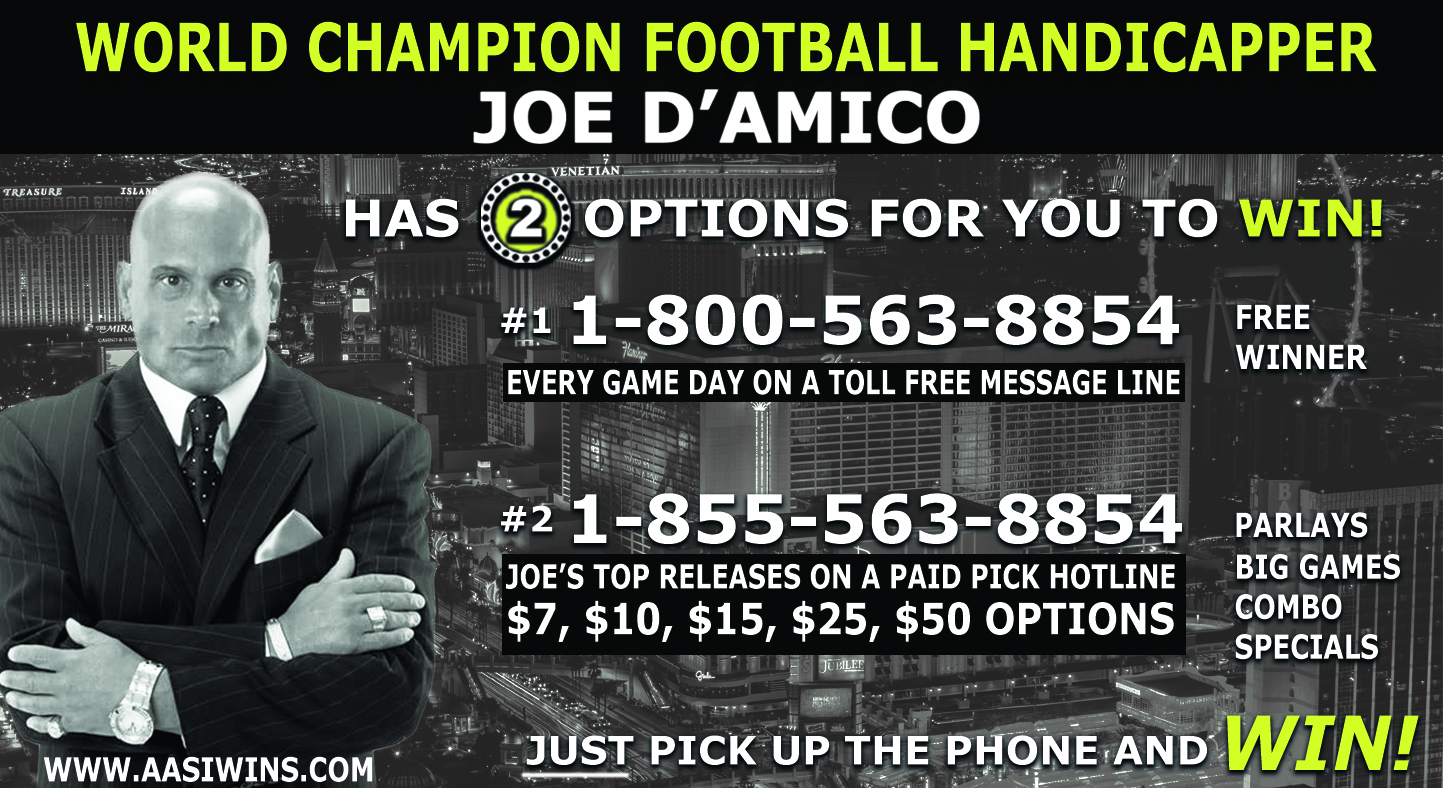
Sports Handicapping: Money Management 101 by Bryan Leonard
As you gear up for the second half of the baseball season, this is a good time to talk about the importance of money management, which will carry over into football season, too. I recall an old tale about a gambler. A husband accompanied his wife to the hairdresser, which will take just over an hour. The guy goes next door to the casino and plays five dollars at the blackjack table. He proceeds to go on the roll of a lifetime, getting great hand after great hand. In an hour he’s up four-hundred thousand dollars, but as his luck begins to turn he keeps pressing. Within ten minutes he’s lost it all. He leaves and meets up with his wife. “So how’d you do?” The man shrugs his shoulders, “I lost five bucks.”
I’m reminded of this because all the time I hear self-proclaimed sports betting experts tout that they hit 75 percent of their baseball selections. Well the fact is, you can hit 75% of your baseball picks and still lose money. Winning percentage doesn’t matter – turning out a profit does, which is why I like to look at underdogs in baseball.
The man at the blackjack table might have won 80% of his hands that morning, but still wound up losing five bucks. A baseball handicapper can do the same thing, giving out a trio of three-dollar favorites, for example, like the Yankees over the Royals and two other high priced favorites. But if any one of those three plays goes down, he hits 66% of his selections and winds up in the red. Certainly that’s not something to boast about.
Betting baseball is like every other sports wagering bet – you play to win and turn a profit, for yourself and your clients, plain and simple. I play more baseball underdogs than favorites. I like looking for small to medium-range dogs that have the talent to keep a game close with the expectation of grinding out a profit over the course of 162 games. For instance, if I give out four dogs at +125 and go 2-2, my winning percentage may be an unimpressive 50%, but I’ve turned a profit, which is the bottom line.
The general public likes to bet favorites, be it in baseball, football or basketball. As a professional handicapper for 25 years, I’ve found baseball dogs, generally speaking, to provide better betting value than favorites. Another reason is that a professional bettor loses credibility even if he wins giving out a big favorite.
If I give out Johan Santana at minus-280, if Santana wins people are going to think, “Well of course the Mets got the money – they were supposed to win! Anyone could predict that.” And they’re right. And if Santana happens to lose as a three-dollar favorite, which does happen, people will think, “How can you be so dumb to give out a 280-favorite? Now I’ve got to win three bets in a row just to make up what I lost.” And they’re right again, so the pro handicapper can’t win. If you lose a big favorite like that – and it happens all the time – the pressure’s on to win three in a row to negate your loss on the big favorite. It takes enough work to go 1-0, never mind 3-0.
Yes, those big favorites go down more often than you might think. After one baseball season I made a list of all the favorites and categorized them into columns, such as “minus-140-185, minus-190-220, minus-225-250, minus-255-280″, etc. After totaling up all the wins and losses for each column, it corresponded very closely to what the line was for each game. For example, the total wins and losses for all the minus-300 favorites that season was something like 24 wins and 8 losses – a perfect 3-to-1 ratio. The point is, oddsmakers do a good job of making numbers that balance the money proportionately.
For example, look back to the first week of the 2008 baseball season: The Yankees were favorites of -155, -140, -170, -185 and -225 to start the season, yet went 2-3 in those 5 games. To start the 2007 season, the Astros and Roy Oswalt were a -230 favorite over the Pirates – and lost 4-2. Oswalt was the highest favorite on the board that day. The next time a favorite that high played, it was the Yankees Kai Igawa, who was a -230 favorite against Baltimore. He has had another awful season and got the win that day, but just barely in a 10-7 shootout, pitching poorly.
This is why parlays can be dangerous and sucker a lot of novice bettors in. Parlays have a bigger payout, of course, but don’t forget they’re much more difficult to hit. And sports books love parlay bettors – that’s a big part of how they stay in business. I would advise mastering single bets first and turning a consistent profit over the long haul before branching into parlays.
I’ve known of people who pick nine out of ten winners, but don’t win a dime because they parlayed the one loser with the nine winners. Picture what that scene was like when the guy heads home. Just like the chump who went to the blackjack table, the parlay-man boasts to his wife, “Hey, I hit 90% of my plays today!” The wife smiles and asks how much he won. “Nothing. I parlayed the one loser with the nine winners.” Bet smart and turn a profit over the long haul before boasting about exorbitant winning percentages.
Get all of Bryan Leonard’s FREE handicapped winners right here at www.aasiwins.com. Come to www.aasiwins.com for al your FREE sports winners, news, articles, and updates.






